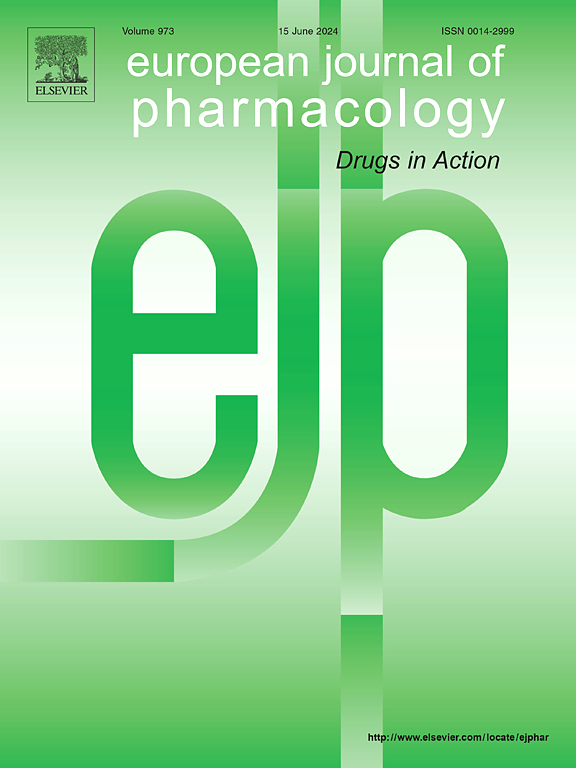Chrysin's anti-inflammatory action in the central nervous system: A scoping review and an evidence-gap mapping of its mechanisms
IF 4.2
3区 医学
Q1 PHARMACOLOGY & PHARMACY
引用次数: 0
Abstract
Neuroinflammation is a key driver in the progression of neurodegenerative diseases and central nervous system (CNS) injuries. Chrysin, a natural flavonoid, has demonstrated significant neuroprotective effects due to its anti-inflammatory, antioxidant, and anti-apoptotic properties. This scoping review systematically analyzed 29 studies published between 2005 and 2023, identified through a search of PubMed, Scopus, and Web of Science databases (yielding 1919 initial records). Chrysin mitigates neuroinflammation by inhibiting NF-κB signaling, downregulating pro-inflammatory cytokines (TNF-α, IL-6, IL-1β), and suppressing the expression of key inflammatory enzymes, including iNOS and COX-2. It also modulates critical signaling pathways, such as PI3K/Akt/mTOR and JNK, while enhancing antioxidant defenses through increased activity of enzymes like superoxide dismutase and glutathione peroxidase. Importantly, chrysin exhibits anti-apoptotic effects by regulating the expression of apoptotic markers, including the downregulation of Bax and caspase-3 and the upregulation of Bcl-2, thereby preventing neuronal cell death. These mechanisms have been validated in preclinical CNS inflammation models, including spinal cord injury, traumatic brain injury, ischemia/reperfusion injury, Parkinson's disease, and experimental autoimmune encephalomyelitis. Despite its promising therapeutic potential, limitations such as low bioavailability and the lack of comprehensive clinical studies warrant further investigation. Addressing these gaps could enhance chrysin's translational potential as a viable neuroprotective agent for managing neuroinflammatory and neurodegenerative conditions.
求助全文
约1分钟内获得全文
求助全文
来源期刊
CiteScore
9.00
自引率
0.00%
发文量
572
审稿时长
34 days
期刊介绍:
The European Journal of Pharmacology publishes research papers covering all aspects of experimental pharmacology with focus on the mechanism of action of structurally identified compounds affecting biological systems.
The scope includes:
Behavioural pharmacology
Neuropharmacology and analgesia
Cardiovascular pharmacology
Pulmonary, gastrointestinal and urogenital pharmacology
Endocrine pharmacology
Immunopharmacology and inflammation
Molecular and cellular pharmacology
Regenerative pharmacology
Biologicals and biotherapeutics
Translational pharmacology
Nutriceutical pharmacology.

 求助内容:
求助内容: 应助结果提醒方式:
应助结果提醒方式:


